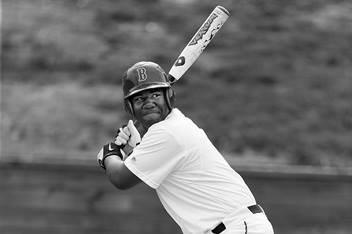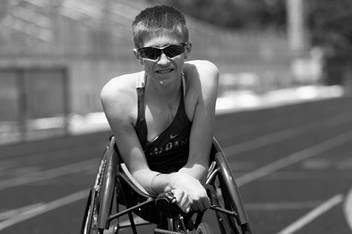Let's Play Ball - Throwing Guidelines For Young Players
Coaches and parents of young baseball players, or any athlete in a throwing sport, often have questions about throwing injuries and how to prevent them. These are real concerns due to the increasing rate of shoulder injuries seen in this population.
Dr. Richard Rodenberg, MD, Sports Medicine Physician at Nationwide Children's Hospital states, “There is currently an alarming trend in youth baseball injuries. Shoulder and elbow growth plate injuries have become common as young athletes are playing in leagues with high game volumes in a given season. These players often don’t have enough recovery time prior to the next outing and subsequently may play through pain. Adolescent growth plates are vulnerable to stress up through the later teen years. Injuries to these areas are often season ending due to the amount of healing that needs to take place.”
We will outline some of the major topics associated with throwing injuries in 9 individual sections or “innings.” So let’s play ball!
1st Inning: Preseason
To reduce the risk of injury – conditioning drills should be initiated prior to the start of the first practice session.
Kids that are in shape at the beginning of the season have a better chance of performing at a higher level and staying injury free.
Focus on flexibility, upper body and core strengthening and always include running drills. This combination will help make sure the body is ready to accept the demands of the season.
2nd Inning: Time to Stretch!
Just like any other sport it is very important to warm up and stretch before a player throws.Dynamic warm-ups help prepare the body for this.
Light conditioning at the beginning of practice warms muscles making it easier to stretch them. Stretching should include the upper and lower body as well as the hips and back. The lack of flexibility can actually decrease how fast the pitch is thrown.
3rd Inning: Mechanics, Mechanics, Mechanics!
Kids should learn proper throwing mechanics and master them completely before ever starting to pitch.
Always avoid using a radar gun. Young pitchers are often more concerned with how hard or fast they can throw, instead of how well they throw.
Throwing hard combined with poor form almost always makes injuries more likely to occur.
Proper mechanics → decreases stress on arm → less arm fatigue → increased overall control and speed.
4th Inning: Put Me in Coach, I’m Ready to Play!
Young players often think (incorrectly) that arm soreness is part of the game. Soreness can change mechanics as players try to avoid painful arm positions.
Shoulder and elbow pain should always be a concern to coaches and parents. Addressing the pain and soreness early and changing activity level can help in the return to play and reduce the risk of a more serious injury that may be season ending.
5th Inning: So What is a Pitch Count?
It is the actual number of pitches thrown during a game.
Limits are used to reduce the amount of stress placed on a pitcher’s arm. There are many pitching guideline available, however we feel the version listed below is the best for young pitchers. It considers the age of the thrower and the number of pitches that should be made during each game.
The total number of pitches that should be thrown in a week, during the entire season and throughout the year is also listed. Following pitch count guidelines is important for the health of a pitcher’s arm and length of his career.
6th Inning: What Pitches Are Appropriate For Young Throwers?
A fastball should be the first pitch to be learned. Once the pitcher has become skilled in throwing a fastball, a change-up can be added.
Physicians at Nationwide Children’s Sports Medicine prefer to see young pitchers begin to throw curveballs and other breaking pitches once they are close to done growing and have adequate arm strength and control.
Breaking pitches should be taught by someone with knowledge of proper pitching mechanics. If not, the young pitchers may be more likely to have elbow and shoulder injuries.
7th Inning: Player Substitutions, Making the Right Change
It is common for a coach to “take out” a pitcher when the maximum number of pitches has been thrown or if the game situation calls for a change.
If the pitcher continues to play in that game, he should not be placed at shortstop or 3rd base where long hard throws are required on an already tired arm. Pitchers should never be catchers on the same team. This combination results in too many throws and increases their risk of injury.
The safest place is moving to 2nd or 1st base where the throws are shorter and less stress is placed on the arm.
8th Inning: Knowing When to Rest
It is also important to know how long to rest young pitchers in order to allow the best recovery between outings.
This rest period is again based on age and is included in our pitch count guidelines.
Pitchers should also ice their shoulders and elbows for 20 minutes after throwing to promote recovery.
9th Inning: My child Plays in Multiple Leagues
Some players may play on more than one team in a season. This warrants close attention to proper rest.
Body and arm fatigue CAN change mechanics and lead to injury. When playing on multiple teams, consider pitching on only one and playing a field position on the other (not catcher). There should be no competitive pitching for at least 3 to 4 consecutive months every year to ensure the best possible recovery.
|
MAXIMUM PITCHING LIMITS (Typically 60’ Pitching Distance) |
||||
|
AGE |
PER DAY |
PER WEEK |
PER SEASON |
PER YEAR |
|
7-8 |
50 |
* |
* |
* |
|
9-10 |
75 |
75 |
1000 |
2000 |
|
11-12 |
85 |
100 |
1000 |
3000 |
|
13-14 |
95 |
125 |
1000 |
3000 |
|
15-16 |
95 |
* |
* |
* |
|
17-18 |
105 |
* |
* |
* |
*There is no evidence to support pitching limits for these specific categories and age groups. Remember to stop throwing if fatigue, pain, or injury.
|
DAYS OF REST REQUIRED FOR PITCHES THROWN IN A DAY |
|||||
|
AGE |
0 DAY REST |
1 DAY REST |
2 DAYS REST |
3 DAYS REST |
4 DAYS REST |
|
7-14 |
1-20 |
21-35 |
36-50 |
51-65 |
66+ |
|
15-18 |
1-30 |
31-45 |
46-60 |
61-75 |
76+ |
Information and Guidelines adapted from the following:
- Pitch Smart, Major League Baseball®, 2018
- Position Statement for Adolescent Baseball Pitchers, American Sports Medicine Institute, 2013
- Little League® Baseball & Softball, 2010
- Medical Safety Advisory Committee Special Report, USA Baseball®, 2006
Frequently Asked Questions: OHSAA Baseball Pitch Count Regulations
Due to the high number of pitching related injuries, a state wide pitch count restriction in high school baseball was approved by the Ohio High School Athletic Association Board of Directors.
The OHSAA regulation now calls for a maximum pitch per day as well as required days of rest.
Maximum number of pitches thrown daily = 125 Pitches
|
DAYS OF REST REQUIRED FOR PITCHES THROWN IN A DAY |
||||
|
0 DAY REST |
1 DAY REST |
2 DAYS REST |
3 DAYS REST |
|
|
1-30 |
31-50 |
51-75 |
76+ |
|
Who does the pitching regulations apply to?
Pitching restrictions in grades 7-12th shall follow to the pitch/rest limitations.
Can an athlete pitch in both games of a Double Header?
If a pitcher throws at least 31 pitches in a single game, he may not pitch in another game that day.
What happens if an athlete reaches the maximum pitch count while a batter is still at bat?
An athlete may go above the 125 daily limit pitch count to finish pitching only to the current batter.
Does the pitch count need to be reported?
A coach must submit pitcher data at the conclusion of every contest to a designated collection system. Schools are required to keep pitch counts on all pitchers and submit them to the OHSAA upon request.
What happens if an athlete violates the pitch count requirement?
A team will be required to forfeit any wins that occur during a game where the regulation is violated.
What if a game is suspended or interrupted due to weather/darkness?
Any pitches thrown during an interrupted contest must be counted towards the daily pitch count.
Do pitches thrown during scrimmages/previews need to be counted?
Yes, the pitch count regulation must be monitored during all contests.
Nationwide Children’s Hospital Sports Medicine specializes in diagnosing and treating sports-related injuries in youth, adolescent, and collegiate athletes. Services are available in multiple locations throughout central Ohio. To make an appointment, call 614-355-6000 or request an appointment online.


